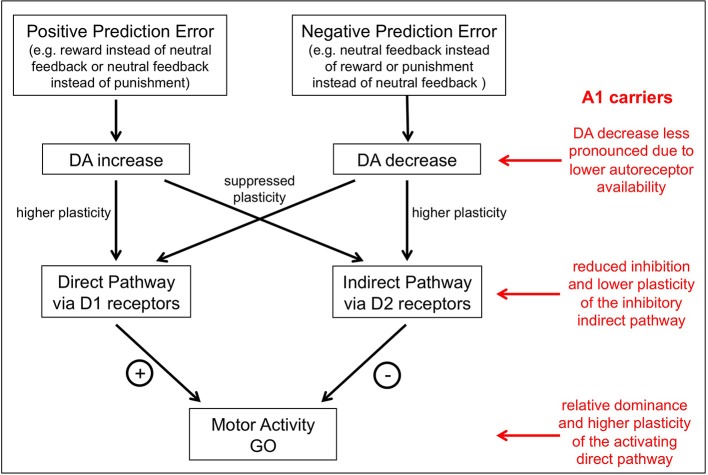Figure 3.
A model of the putative influence of the TaqIA polymorphism on action-valence interaction. DA neurons signal reward prediction errors in the form of phasic bursts for positive prediction errors and dips below baseline firing rate for negative prediction errors. Increases of DA in response to an unexpected reward reinforce the direct pathway via activation of D1 receptors and thereby facilitate the future generation of go choices under similar circumstances, while dips in DA levels in response to an unexpected punishment reinforce the indirect pathway via reduced activation of D2 receptors and thus facilitate the subsequent generation of no-go choices in comparable situations. A1 carriers have less D2 receptors and thus would be assumed to have less limitation of dopaminergic signaling after negative prediction errors in the indirect pathway and a shift to a more action-oriented behavioral pattern mediated by the direct pathway.

